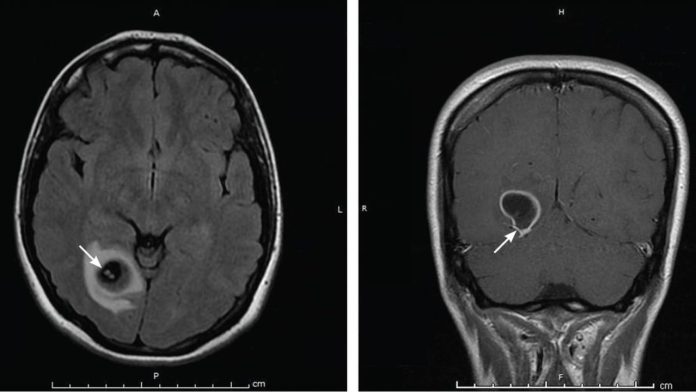Neurocysticercosis infections are more common in areas with poor sanitation and hygiene, and larvae may enter the brain, spinal cord, or other neurological tissues through contaminated water consumption. The pig tapeworm (Taenia solium) larvae cause neurocysticercosis, an avoidable parasitic infection that affects the central nervous system. The larvae create cysticercosis, a disorder that occurs when the larvae damage different regions of the body.
Causes:
A type of brain infection called neurocysticercosis is brought on by parasites. It is brought on by Taenia solium larval cysts, often known as pig tapeworms. Eating undercooked meat and contaminated vegetables, especially root vegetables that grow underground, is the major way that it is spread. Taenia solium larval cysts puncture the human gut after ingestion, resulting in neurocysticercosis. The disease known as neurocysticercosis is brought on by tiny worms that live in unclean and unsanitary environments. It is primarily a byproduct of undercooked pork. Thus, the risk of contracting this disease, which directly damages the brain and spinal cord, is increased in individuals who eat pork that has been incorrectly cooked.
Symptoms:
Neurocysticercosis in other body parts or organs typically results in subacute to chronic symptoms, or it may stay asymptomatic. However, the illness can be lethal if it affects the brain and produces severe symptoms. Clinically, neurocysticercosis manifests as epilepsy or seizures in the great majority of patients (about 70% of all cases). Headache, stroke, vertigo, or neuropsychiatric impairment are other typical symptoms. If these tapeworms begin to remain in your brain or spinal cord, you will experience difficulties. Seizures, or mild electric shocks, are the result of this illness. Severe headaches that are unbearable and refuse to go away are another possible sign. Other symptoms include experiencing disorientation, lightheadedness, and sensory problems.
Treatment:
The primary treatments for neurocysticercosis involve symptomatic treatment and anticonvulsant medication to control seizures. Anti-cystic circle therapy is started if the cyst load is larger. Similar to the antibiotic treatment used for the bacteria, the anti-cystic circle treatment necessitates close observation.
Different approaches are used by healthcare practitioners in this regard. They treat you with a special concoction of medications to combat these worms. These prescription medications specifically target the worms, assisting the body in eliminating them; yet, the abrupt demise of these worms within your body may have an impact on your overall health. Thus, additional medication is provided to help you with further adverse effects in order to prevent such diseases as edema. The physicians will operate to remove the worms from your body when the disease gets out of hand.

 हिंदी
हिंदी






